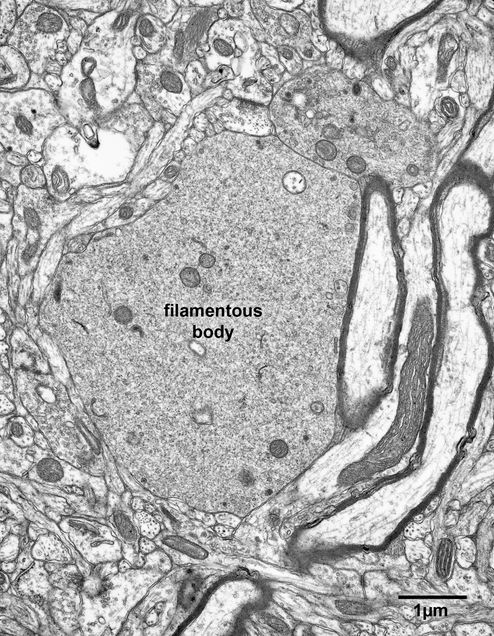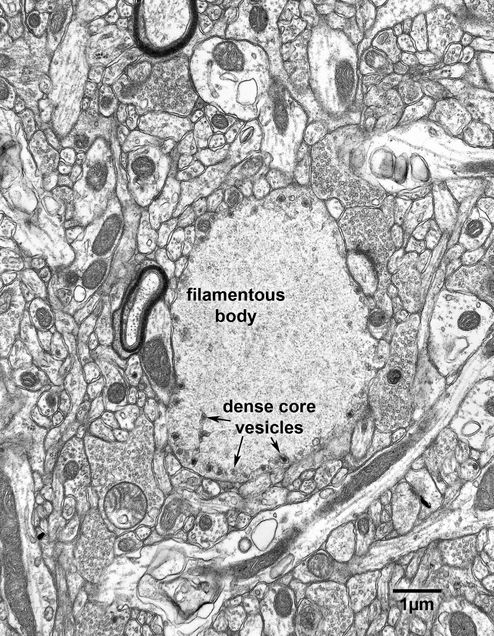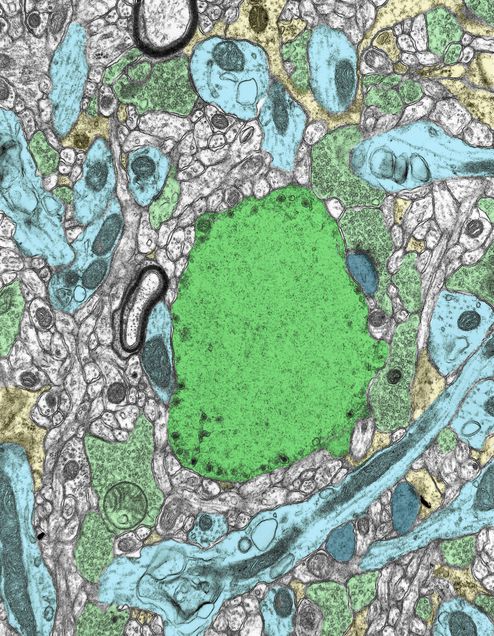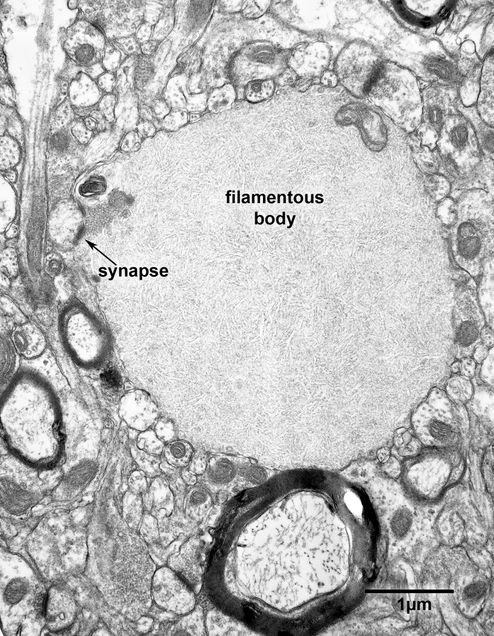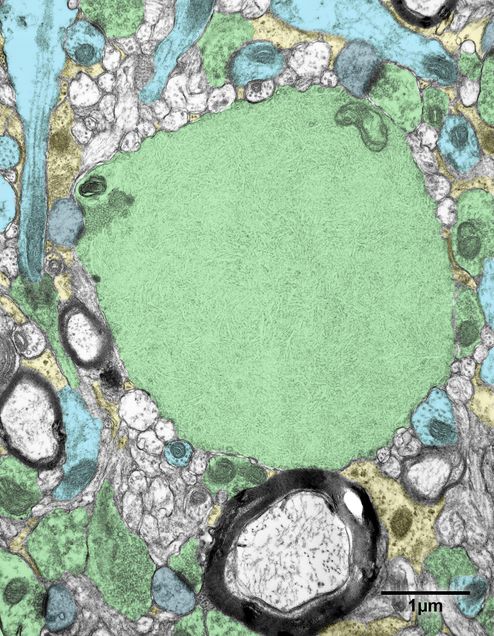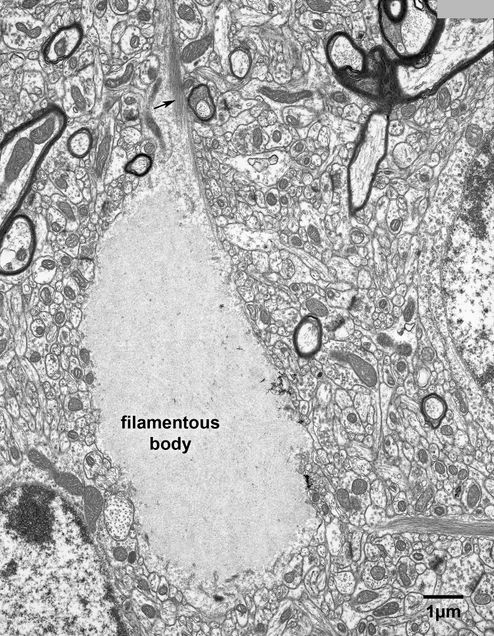Chapter 17 – filamentous bodies
In our laboratory we have been calling these structures “Oatmeal bodies” for want of a better name, but the name “filamentous bodies” is more appropriate for them. These structures are of varying sizes, are bounded by a membrane and are characterized by their content of a filamentous, amorphous material in which a few mitochondria might be embedded.
Some of these structures, like the ones illustrated in Figs. 17.1, 17.2, and 17.2A give no clues as to their origin. Others, such as the one illustrated in Fig. 17.3 and 17.3A are obviously derived from axons, since, as in this case, some synaptic vesicles are evident in one portion of periphery of the structure, where it is forming an asymmetric synapse with a dendritic spine. The structure illustrated in Fig. 17.4 also appears to be derived from an axon, since although it is not forming a synapse, it has synaptic vesicles at one pole.
Another variation in structure is shown in Fig. 17.5, which shows a filamentous body with a bundle of intermediate filaments on one side of the structure. Unfortunately it is not evident whether these filaments are neurofilaments or astrocytic fibrils, so that the structure could have been be derived from either an axon or an astrocyte. The same is true of the structure illustrated in Fig. 17.6, although in this case the bundling of the filaments resembles astrocytic fibrils more than neurofilaments.
Consequently, on the basis of what has been seen to date, it is evident that some of these filamentous bodies originate from axons, and it is possible that others are derived from astrocytes.
Figure 17.1
A large filamentous body in layer 5 of the primary visual cortex of a 35 year old monkey. The cytoplasm of this structure is filled with thin filaments together with a few mitochondria. The origin of this structure cannot be determined from the image.
Figure 17.2
A small filamentous body in area 46 of a 23 year old monkey. The structure is filled with thin filaments and has some dense core vesicles at some parts of its periphery. There are no clues as to the origin of this structure.
Figure 17.2A
Filamentous body- dark green; axon terminals- lighter green; dendrites- blue; dendritic spines- gray; astrocytes- yellow.
Figure 17.3
A filamentous body in the primary visual cortex of a 35 year old monkey. The cytoplasm of this structure is filled with thin filaments, but on one side there is a cluster of synaptic vesicles where the filamentous body is forming an asymmetric synapse with a dendritic spine. Consequently this body must be an altered axon.
Figure 17.3A
A colorized version of figure 17.3. Filamentous body and other axon terminals- green; dendrites- blue; dendritic spines- gray; astrocytic processes- yellow.
Figure 17.4
A large filamentous body in the primary visual cortex of a 23 year old monkey. The cytoplasm of this structure is filled with thin filaments, but at one part of its periphery there is a cluster a synaptic vesicles (arrow) indicating that this structure is a modified axon.
Figure 17.5
A large filamentous body in the primary visual cortex of a 25 year old monkey. Much of the cytoplasm is filled with randomly oriented thin filaments, but on one side of the profile is a bundle of longitudinally oriented filaments (arrows). There is not enough definition to determine whether these are neurofilaments or astrocytic filaments.
Figure 17.6
Another example of a filamentous body, this one in the primary visual cortex of a 23 year old monkey. The cytoplasm of much of the body is filled with thin filaments, but at the top of the image it gives rise to a process that has a more normal looking cytoplasm. The process has an irregular shape and contains a bundle of filaments (arrow), suggesting that it might be derived from an astrocyte.


